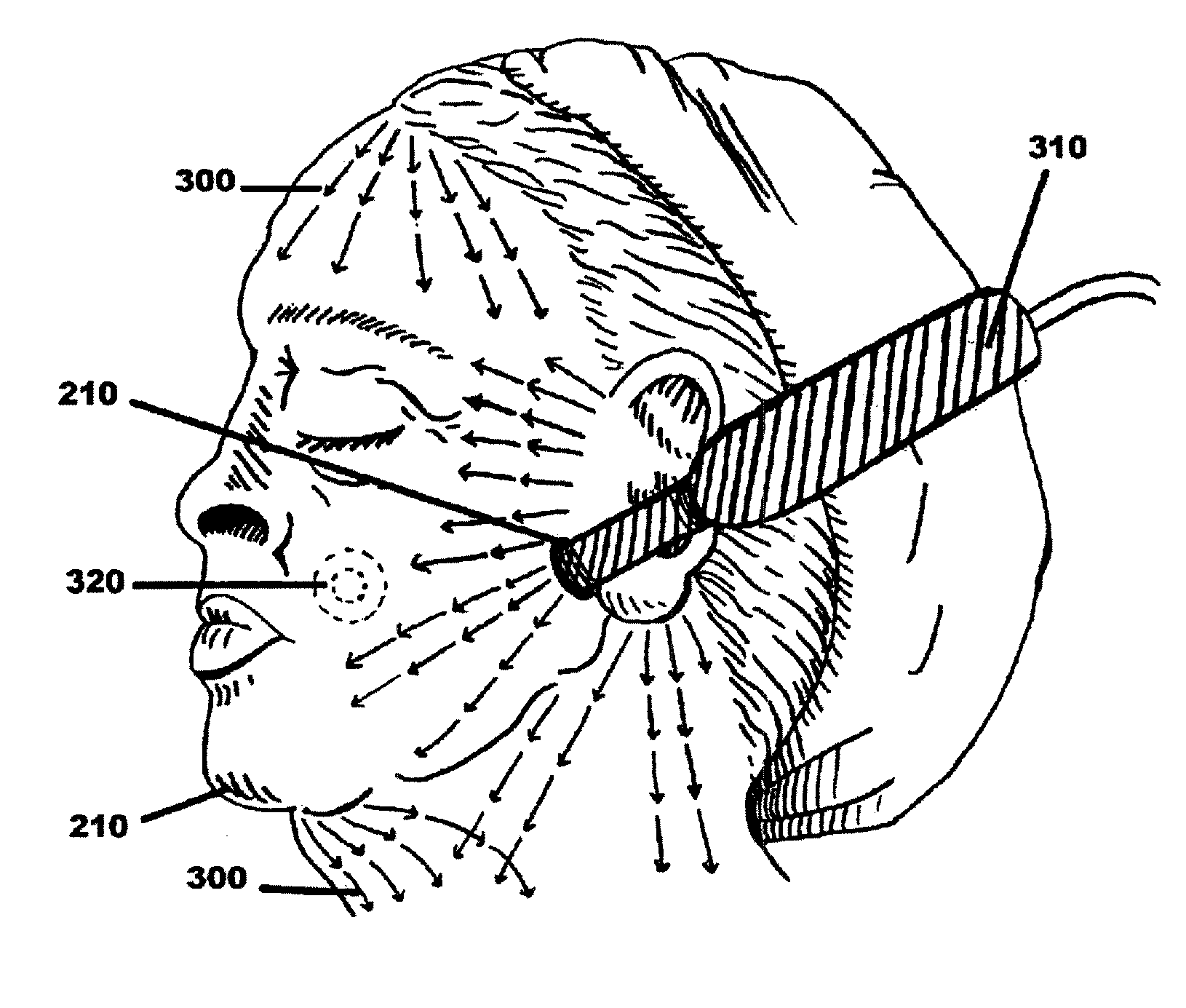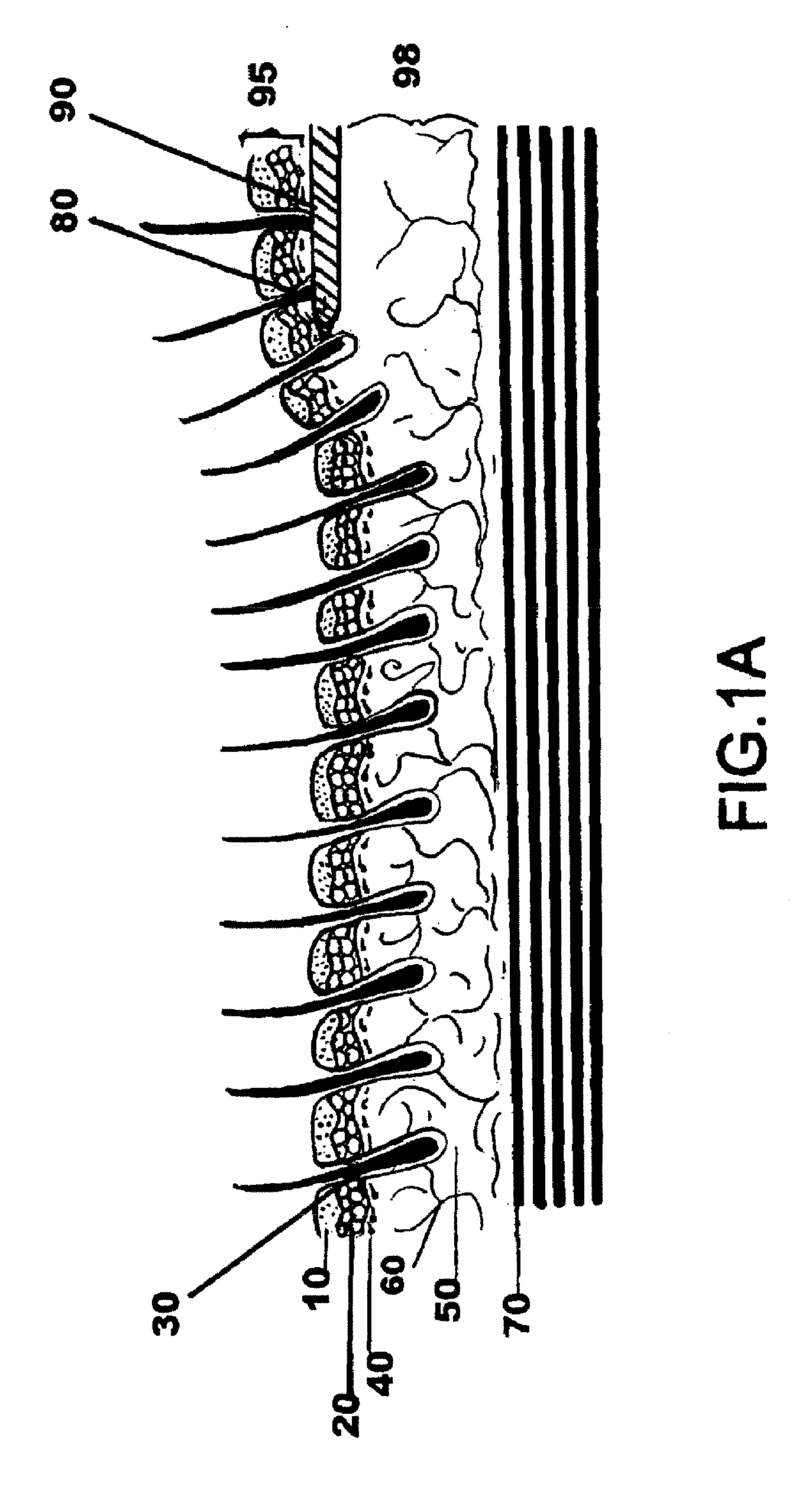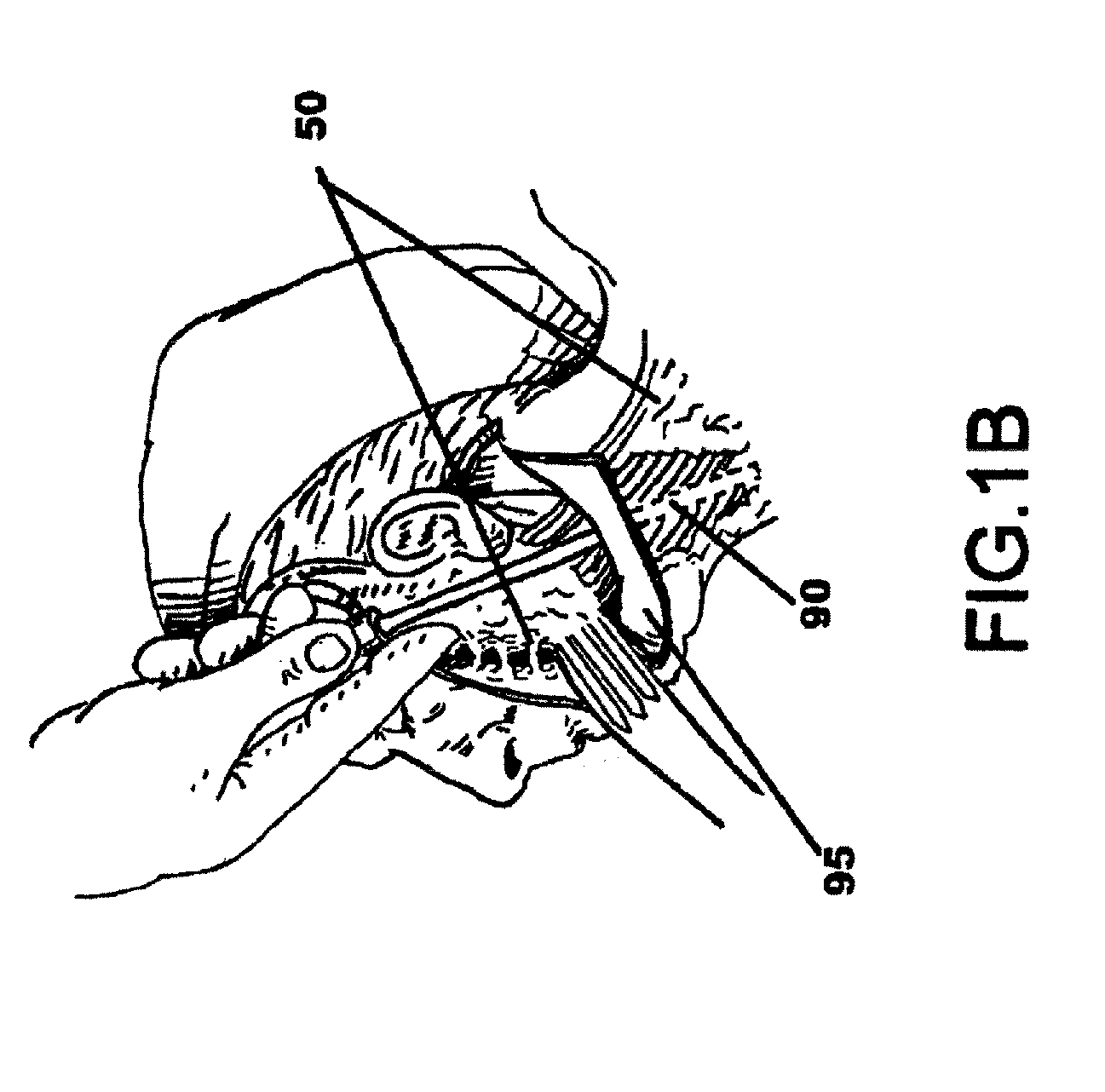Thermal damage to collagen is likely brought about by
hydrolysis of cross-linked collagen molecules and reformation of
hydrogen bonds resulting in loss of portions or all of the characteristic collagen triple-
helix.
Currently no device or method in the medical literature addresses all of these concerns simultaneously.
Sharp instrument undermining is a mainstay of
plastic surgery, however even experienced plastic surgeons performing face-lifts may, from time to time, “lose” the correct tissue plane while performing sharp undermining; even with great skill and experience, previous surgical scarring or aberrant
anatomy may thwart surgical perfection during sharp scissor or scalpel
tissue dissection / undermining.
Unfortunately, blunt undermining alone between highly fibrous tissues that exists in the human face results in irregular tunnels with thick fibrous walls.
Current face-lifting instruments that
cut with other than manual energy are incapable of providing a uniform wall free tissue plane during energized face-lifting
dissection.
Unfortunately, virtually every
skin rejuvenation
system that has existed until now (with the exception of injectable
skin filling compounds) and even traditional face-lifting
surgery (when
cutting through the
skin around the ear is considered) must pass through the epidermis to attempt to reach and treat the
dermis.
Damage to the epidermis and its component structures often results in undesirable colorations or color losses to the skin as is seen in scarring.
Prolotherapy agents have never been previously described for facial tightening or strengthening, to our knowledge, possibly because there is currently no instrument available to precisely create uniform
facial tissue planes upon which the chemical gradients' of potential prologherapy agents can act.
All currently available
laser treatments, however, exhibit significant problems and these
laser systems typically operate safely and effectively only over a narrow, patient dependent treatment range.” The prime reason for the
narrow range is the ultra-delicate epidermis.
The absence of epidermal damage in NDR techniques significantly decrease the severity and duration of treatment related side effects.
While it has been demonstrated that these techniques can avoid epidermal damage, the major drawback of these techniques is limited
efficacy [ref 26].
Anderson's FP device is external, not designed to, not can it, break the fibrous tissues beneath the surface skin and cannot be passed beneath the skin without another attachment or device such as applicant's tip to “ice-break” the way.
Unfortunately, surface treatments are only temporary and cause only minor tightening.
The difference in results is largely due to the great disparity between the two methods in energy delivered to the tissues.
However most importantly, when it comes to internally electro-modifying human tissues, is that immediately local vaporized tissue regions take on a relatively high
electrical impedance, and increase the
voltage difference, thus altering further local electrical penetration / treatment of the tissues.
Irregular
energy absorption by irregularly thick and irregularly formed fibrous tunnel remnants resulting from the use of devices, other than applicant's, would thus cause visible irregular
skin surface effects on healing.
Unfortunately, observing Eggers' diagram 2c top view may lend the incorrect impression of similarity in shape to the applicant tips; however, in Eggers the protrusions are electrodes / conductors which would irregularly violate and destroy the vital human
facial tissue structures including the subdermal
plexus of vessels on passage if creation of a plane were attempted or even possible.
Without uniform tissue planes to uniformly energize, there cannot be uniformity of tissue contraction.
Without facial uniformity there is only non-uniformity.
All are incapable of yielding tunnel-wall-free, completely uniform facial planes upon which to energetically act thereupon.
. . Joulean heating.” In itself, '354B1 would thus be impossible if not completely impractical device for use as an internal, minimally-invasive, complete facial tissue modification device because fulfilling such requirements of pressing blindly to seal unseen blood vessels up to 10 cm away from a limited incision port would impossible without an
endoscope and thus take hours to complete
surgery (less than opening up and closing an entire traditional face-lift).
The lateral wire of '248B1 would be forced in a direction opposite the areas of greatest fibrous build-up adjacent non-uniformly lysed tunnels thus resulting in a non-uniform result.
'079B1 uses an
active electrode with a dynamic
active surface area of varying geometry however, applicant's geometry differs significantly in that '079B1 is incapable of yielding tunnel-wall free completely uniform facial planes which would adversely effect evenness in tissue plane
energy absorption.
Additionally, the monopolar
cutting current of '079B1 is undesirable for collagen /
fibrous tissue modification function of applicant's tissue-modifying-energy-window / zone and would largely damage the delicate underside of the facial
dermis and dermal
plexus since '079B1's stated and anticipated geometry lacks the protective insulated protrusions of applicant to safeguard such vital structures.
Because of this lack of significant tightening
efficacy without permanent epidermal changes or
scarification, Visage® has seen only limited use in cosmetic
surgery and salons; use at higher energy levels has caused undesirable surface
skin scarring.
Unfortunately, the amount of tissue contraction Thermage, Inc. can prove in the medical literature borders upon statistical insignificance (to quote several prominent cosmetic surgeons) and is far less than 5%.
'854B1 Method for Controlled Contraction of Collagen in Fibrous Septae in
Subcutaneous Fat is largely viewed in the medical
community to be undesirable.
This because
cellulite (an undesirable problem) is currently widely thought to be the result of contracted fibrous septae causing in-pocketings of the upper skin
layers down toward the fatty layer.
The arrays of electrodes in Brucker are detecting electrodes located around the tip of Brucker in which lies a single energized treatment
electrode that only escapes or transiently protrudes from the
catheter channel when there exists a need to kill
heart cells that are improperly firing electrically; Brucker's protruding arrays are usually not deployed in motion and would likely interfere with motion by catching on tissues during motion, Brucker's protrusions therefore do not aid in device motion.
An
endoscope is a cumbersome
optical instrument that would usually requires two hands to use at the same time the surgeon is handling Keller's instrument to direct it to the
target tissue which would be difficult indeed.
Devices such as Keller can only perform spot tunneling unless the surgeon is also using an
endoscope that focuses some type of tissue dissociating energy along an entire tissue plane; unfortunately, to maintain a coordinated planar movement with Keller would be time-consuming and difficult.
Loeb however does not teach any housing or rigid or semi-
rigid structure that would allow passage of a bare
optical fiber through undissected tough and fibrous human fibro-fatty facial tissue.
In light of the human facial
anatomy, where the
dermis is composed of almost impenetrable collagen fibers close to the density of football leather and where the subcutaneous fatty layer contains collagenous fibrous septae that are relatively dense although not as dense as the fatty layer of
abdomen, Loeb cannot deliver a uniform effect and is impractical as enable in '915.
Unfortunately, the rhytisector tool developed a reputation for intense bleeding leading to bruising, hematomas (blood pools) and unwanted
blood vessel laceration (breaking open).
However, Farin's device is not intended for separating tissue planes and is susceptible to catching, tearing or
puncturing the tissue when manipulated.
Unfortunately, skin does not thicken in response to stretching and removal; it only thins.
 Login to View More
Login to View More  Login to View More
Login to View More 


